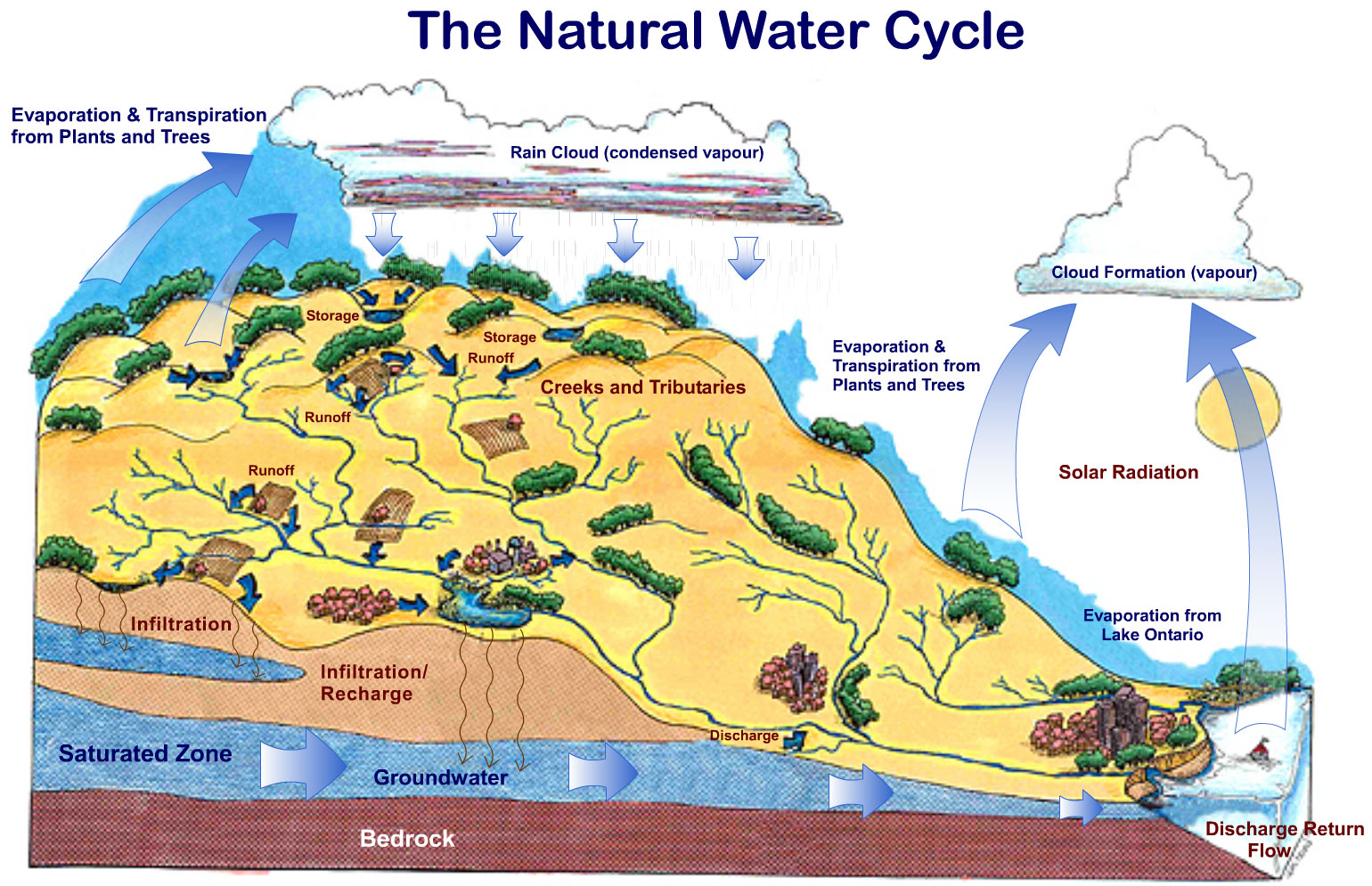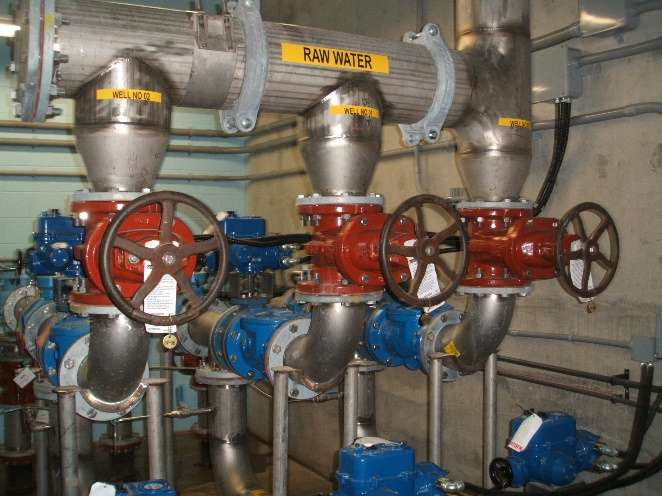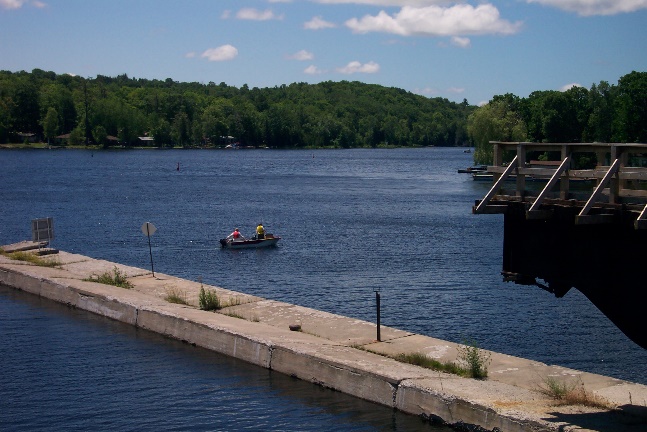What is Source Water?
Source water is untreated water taken from lakes, rivers and underground aquifers for drinking.
What is Drinking Water Source Protection?
Drinking Water Source Protection (DWSP) is simply protecting our drinking water sources from contamination or overuse. The Government of Ontario has made a commitment to ensure that every watershed in the province has a source protection plan.
Why a Watershed-Based Approach?
A watershed is the area of land that drains into a common river or stream. Water in its natural state (solid, liquid, gas, etc.) is vulnerable to contamination or depletion, depending on activities within its watershed.
Within each watershed, a source water protection plan has been developed and is being used to promote groundwater recharge, keep drinking water sources clean and encourage wise use of our water resources.

Why is Drinking Water Source Protection Important?
DWSP safeguards public health by protecting drinking water supplies. DWSP is a preventative approach and is a more cost effective means of protecting drinking water than water treatment alone. Many rural areas do not have access to municipal treatment measures, so for these people, Drinking Water Source Protection may be the only barrier they have against drinking water contamination.
How Can We Protect our Sources of Water?
Everyone can help to protect water at its source. The choices we make range from individual actions, such as taking used engine oil and other household hazardous wastes to proper disposal sites, to collective efforts by everyone working together to implement and adhere to policies of the watershed-based source protection plans.
Under the Clean Water Act will Conservation Authority staff enter onto my land without my permission?
Conservation Authorities have a long history of working with landowners, farmers and municipalities in a mutually acceptable and respectful way and that is not going to change. We all need to work together to protect our water. Conservation Authorities already collect data, carry out studies, map resources and monitor the state of our watersheds daily.
Conservation Authority staff do not enter onto private property without permission and will continue to seek permission of property owners prior to entering their land to monitor etc. Power of entry on private property will only be used when absolutely needed.
What Is a Wellhead Protection Area?
 Many municipalities rely on wells to supply drinking water to its residents. Wells of all types, municipal and private, urban and rural, pump water from under the ground. This groundwater comes from rain or snow that seeps below ground and pools in cracks or spaces in the soil, sand and rock. These underground sources of water are sometimes known as aquifers. The level of groundwater, or the water table, rises and falls depending on the season, temperature, amount of rain or snow and the amount of water withdrawn from the aquifer.
Many municipalities rely on wells to supply drinking water to its residents. Wells of all types, municipal and private, urban and rural, pump water from under the ground. This groundwater comes from rain or snow that seeps below ground and pools in cracks or spaces in the soil, sand and rock. These underground sources of water are sometimes known as aquifers. The level of groundwater, or the water table, rises and falls depending on the season, temperature, amount of rain or snow and the amount of water withdrawn from the aquifer.
A wellhead is simply the physical structure of the well above ground. A wellhead protection area is the area around the wellhead where land use activities have the potential to affect the quality of water that flows into the well.
The amount of land involved in a wellhead protection area is determined by a variety of factors such as the way the land rises or falls, the amount of water being pumped, the type of aquifer, the type of soil surrounding the well, and the direction and speed that groundwater travels. All of these factors help to determine how long it takes water to move underground to the well itself and how much land around the wellhead should be protected.
What Is an Intake Protection Zone?
 Many municipalities rely on surface water to supply drinking water to their residents. Surface water is water that is visible on the landscape. In Ontario this includes lakes, rivers and streams.
Many municipalities rely on surface water to supply drinking water to their residents. Surface water is water that is visible on the landscape. In Ontario this includes lakes, rivers and streams.
The majority of Ontario’s population draws its drinking water directly from the Great Lakes and large rivers, such as the Ottawa River and the St. Lawrence River. Surface water is transported through an intake pipe directly from the lake, river or stream and into a water treatment system. Fortunately, many of these drinking water intakes are located far from shore in deep water, like in the Great Lakes, where contamination is less likely. However, many other municipal surface water intakes in Ontario are located in areas where there are greater risks of contamination.
Protecting the area around a surface water intake means protecting the surrounding water and, in most cases, the land that surrounds the water. This area of water and land is known as an intake protection zone, or IPZ. Protecting it ensures a healthy supply of water now and in the future. Intake protection zones in a large lake, such as a Great Lake, may end up in the shape of a circle and never touch shore, however, intake protection zones in smaller lakes or on rivers may also include the land surrounding it, as well as several smaller feeder rivers or tributaries.

